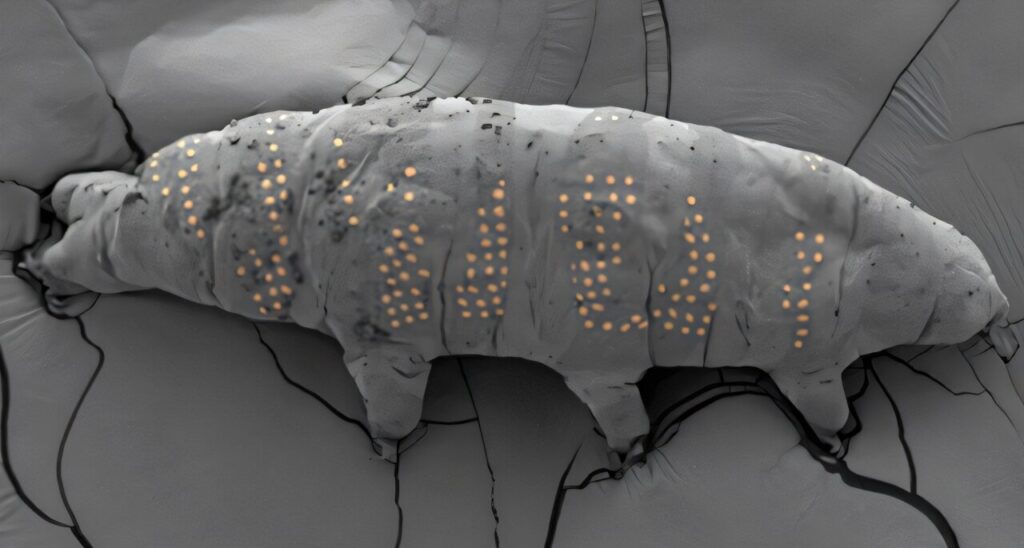If you haven’t heard of a tardigrade before, prepare to be wowed. These clumsy, eight-legged creatures, nicknamed water bears, are about half a millimeter long and can survive practically anything: freezing temperatures, near starvation, high pressure, radiation exposure, outer space and more. Researchers reporting in the journal Nano Letters took advantage of the tardigrade’s nearly indestructible nature and gave the critters tiny “tattoos” to test a microfabrication technique to build microscopic, biocompatible devices.
“Through this technology, we’re not just creating micro-tattoos on tardigrades—we’re extending this capability to various living organisms, including bacteria,” explains Ding Zhao, a co-author of the paper.
Microfabrication has revolutionized electronics and photonics, creating micro- and nanoscale devices ranging from microprocessors and solar cells to biosensors that detect food contamination or cancerous cells. But the technology could also advance medicine and biomedical engineering, if researchers can adapt microfabrication techniques to make them compatible with the biological realm.
So, Zhao, Min Qiu and colleagues employed a process that carves a pattern with an electron beam into a thin layer of ice coating living tissue, called ice lithography, leaving behind a design when the remaining ice sublimates. And what creature is better suited to being frozen, coated in ice, and then exposed to an electron beam than the nearly indestructible tardigrade?
The team put tardigrades into a cryptobiotic state (a sort of half-dead, suspended animation) by slowly dehydrating the microscopic animals. Then, the researchers placed an individual tardigrade onto a carbon-composite paper, cooled the sheet below -226°F (-143°C), and covered the water bear with a protective layer of anisole—an organic compound that smells like anise. The frozen anisole protected the tardigrade’s surface from the focused electron beam as it drew the pattern.
When exposed to the beam, the anisole reacted and formed a new biocompatible chemical compound that stuck to the tardigrade’s surface at higher temperatures. As the tardigrade warmed to room temperature under vacuum, any unreacted frozen anisole sublimated and left behind the pattern of reacted anisole. Finally, the researchers rehydrated and revived the tardigrade, which then sported a new tattoo.
The precision of this technique allowed the team to create a variety of micropatterns: squares, dots, and lines as small as 72 nanometers wide, and even the university’s logo. About 40% of the tardigrades survived the procedure, and the researchers say that could be improved with further fine tuning. Most importantly, the tardigrades didn’t seem to mind their new tattoos: Once rehydrated, they showed no changes in behavior. These results indicate that this technique could be suitable for printing micro-electronics or sensors onto living tissue.
Gavin King, a researcher credited with inventing the ice lithography technique who was not involved in this study, concludes, “It is challenging to pattern living matter, and this advance portends a new generation of biomaterial devices and biophysical sensors that were previously only present in science fiction.”
After this first step, Zhao and Qiu hope that this work could enable advancements such as microbial cyborgs and other biomedical applications in the future.


